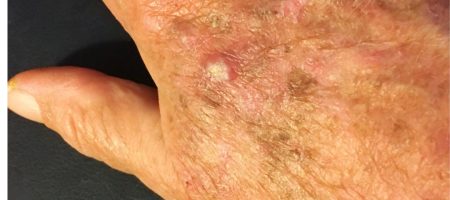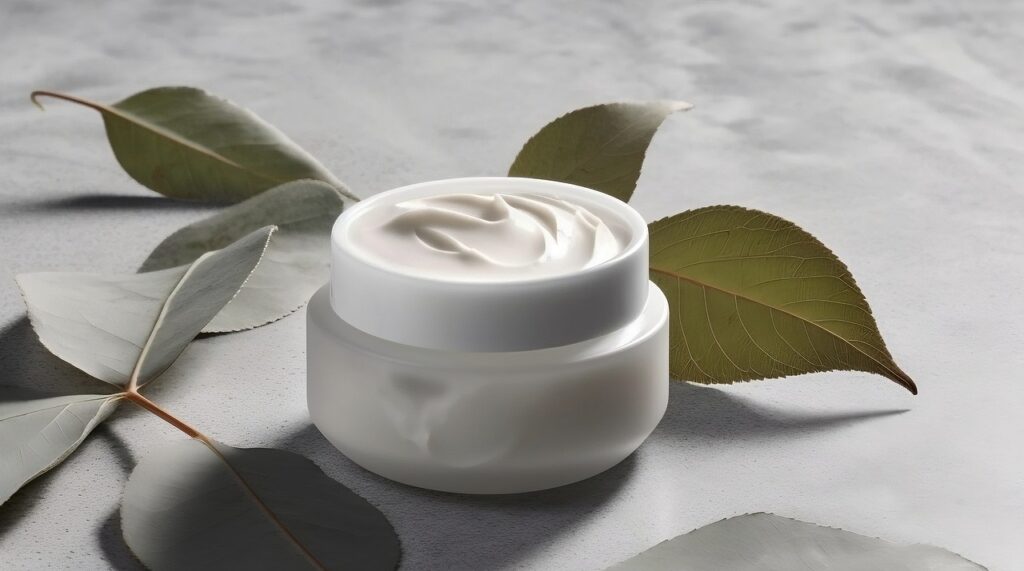“Effective Treatment for Solar Keratosis: A Comprehensive Guide to Fluorouracil/Calcipotriol Cream”
This new compounded treatment originated from successful clinical trials at Harvard University in the USA. Both elements, when combined, Fluorouracil and Calcipotriol Cream demonstrated synergistic effects by
inducing antitumor immunity against sun spots and potentially, cancers of the skin.
What is Fluorouracil/Calcipotriol Cream?
Fluorouracil/Calcipotriol Cream is a topical medication used specifically for the treatment of solar keratoses (actinic keratosis), which are rough, scaly patches of skin that develop from prolonged sun exposure. The cream combines two active ingredients: fluorouracil, a chemotherapy agent, and calcipotriol, a synthetic derivative of vitamin D.
Common Strengths:
- Fluorouracil: Typically, this is available in a concentration of 0.5% to 5% in combination formulations.
- Calcipotriol: Generally included at a concentration of 0.005%.
(The exact strength may vary based on the formulation provided by your healthcare provider.)
Mechanism of Action:
- Fluorouracil: It works by interfering with the synthesis of DNA and RNA in abnormal skin cells, leading to their destruction. This process reduces the growth of precancerous lesions and promotes a healthier skin surface.
- Calcipotriol: It modulates skin cell proliferation and differentiation by acting on vitamin D receptors, helping to restore normal skin turnover and reduce keratinocyte proliferation.
How to Use the Cream:
This combination is to be applied to clean, dry skin TWICE a day for a period of FOUR to EIGHT days as directed by your specialist. Please use enough cream to cover the area like you would when you apply a moisturiser. The desired reaction to this treatment is a mild sunburn i.e. Pink skin. Some patients may find this reaction occurs on day four, some patients may need to continue the treatment up to day six or day eight. Once this reaction
occurs, the treatment is complete and the cream will no longer need to be applied.
-
Preparation:
- Begin by cleaning the affected area gently with mild soap and water.
- Pat the skin dry with a clean towel.
-
Application:
- Apply a thin layer of Fluorouracil/Calcipotriol Cream directly onto the affected skin areas.
- You may apply it once or twice daily, as directed by your healthcare provider.
- Gently rub the cream into the skin until it is absorbed. Avoid excessive rubbing, as this may cause more skin irritation.
-
Post-Application Care:
- Wash your hands thoroughly after applying the cream, unless you are treating your hands.
- Avoid covering the treated area with bandages or dressings unless instructed by your healthcare provider to do so.
-
Timing:
- Try to apply the cream at the same time each day to help remember your dosing schedule.
- If you accidentally miss a dose, apply it as soon as you remember. If it’s nearly time for your next dose, skip the missed dose and resume your regular schedule.
-
Duration of Treatment:
- Your doctor will determine the appropriate duration of treatment. Follow their instructions closely, as treatment typically lasts several weeks but may vary based on the individual and the severity of the solar keratoses.
- If multiple areas are being treated, patients must treat one area at a time. It is important to keep track of all reactions to the skin. If patients experience inflamed, flaky, itchy or burning skin the treatment should be stopped immediately. Please consult your doctor if the above reactions occur. Likewise, if there are no reactions after the fourth day, please contact the doctor as they
may wish for you to continue using the cream for longer.
Important Precautions:
- Sun Exposure: Limit sun exposure during treatment, as UV radiation can aggravate skin irritation. Use a sunscreen with a high SPF, and wear protective clothing when outdoors. It is advised to remain out of the sun during this treatment and use physical barriers i.e. long sleeved shirts and wide brimmed hats if sun exposure cannot be avoided. Some patients may experience dry skin during this treatment, therefore gentle moisturiser can be used. Please allow up to one hour after applying the treatment to apply a moisturiser.
- Irritation Management: If you experience significant redness, burning, or irritation, consult your healthcare provider. They may recommend adjustments to your treatment regimen.
- Avoid Irritants: Refrain from using harsh skin products on the treated area, including exfoliating agents or products containing alcohol.
Possible Side Effects: Common Side Effects:
- Redness, swelling, or irritation at the application site
- Burning or stinging sensation
- Dryness, peeling, or flaking skin
- Itching or rash
Serious Side Effects:
- Allergic reactions (e.g., rash, itching, swelling)
- Signs of infection (increased redness, warmth, swelling, discharge)
If you experience any severe side effects, seek medical attention immediately.
Storage:
- Store the cream at room temperature (between 20-25°C or 68-77°F).
- Keep the product away from direct sunlight and moisture.
- Ensure it is kept out of reach of children and pets.
- You can keep the cream for up to three months and up to six months in the fridge. It is best stored in the door of the fridge.
Consult Your Doctor: Provide your doctor with a complete medical history, including any medications you are currently taking. Routine follow-ups are essential to monitor your treatment progress.
Disclaimer: This leaflet is for educational purposes only and does not replace medical advice. For any questions or concerns regarding your treatment, consult your healthcare provider or pharmacist.
The Team at My Skin Pharmacy

Lane Khin, the compounding pharmacist of My Skin Pharmacy, brings a wealth of knowledge from the worlds of pharmacy and dermatology to the table. With degrees in Pharmacy and Applied Science from QUT, Lane combines a deep understanding of compounding and skincare with a friendly, accessible approach. Through My Skin Magazine, Lane shares her expertise, offering readers practical advice and insights into personalised skincare solutions. Lane has a real passion for helping others achieve their best skin.


